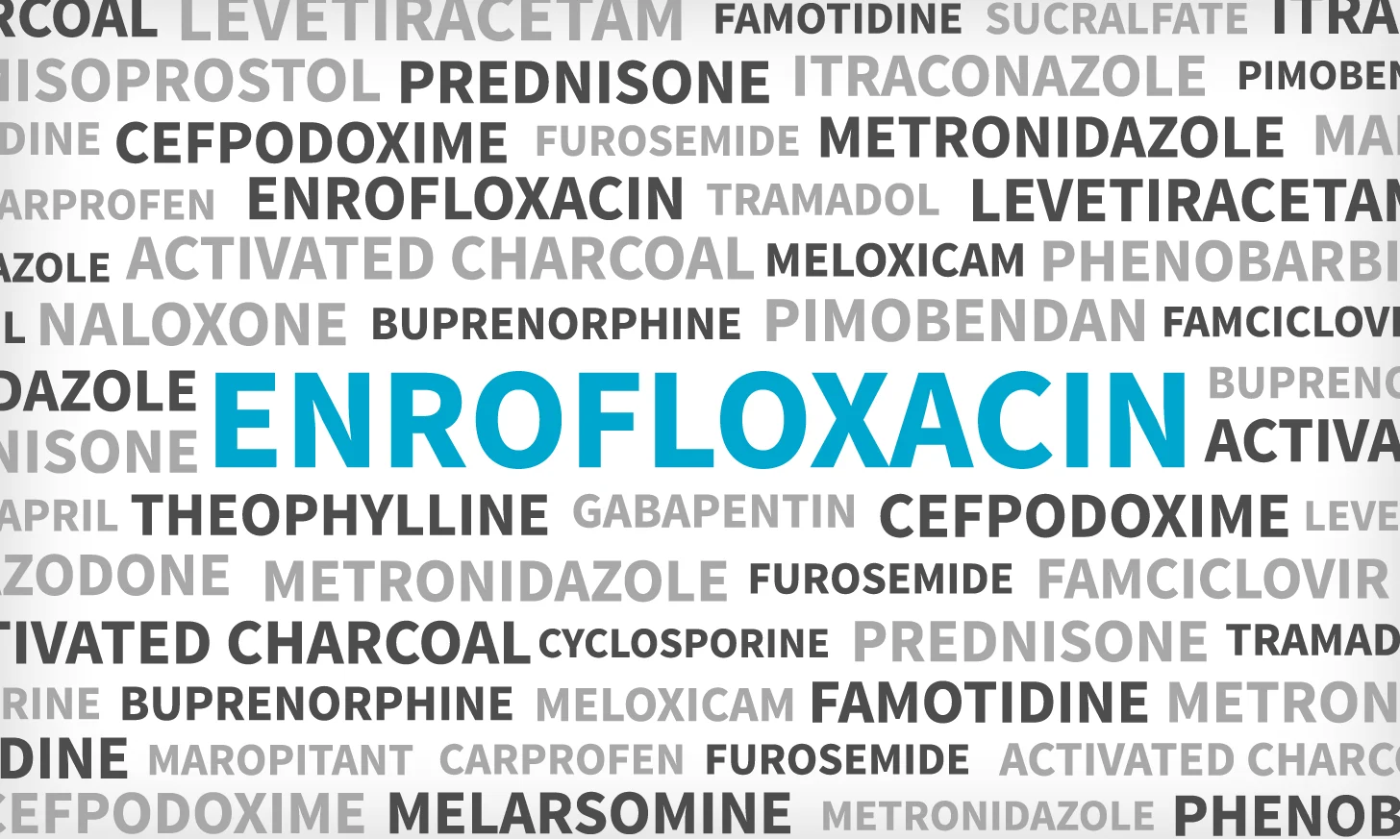Enrofloxacin (Baytril)

Fluoroquinolone Antibiotic (Systemic Drug)
Prescriber Highlights
An oral and injectable fluoroquinolone antibiotic that is effective against a variety of bacterial pathogens
This drug is ineffective for anaerobic infections
Avoid in young animals because of the potential negative impact on cartilage development
Dosages above 5mg/kg/d are not recommended in cats because they may cause blindness
Uses, Indications
Oral formulation use is FDA-approved in both dogs and cats for management of bacterial infections susceptible to enrofloxacin
Because of the feline dosage restriction (ie, 5mg/kg/d), enrofloxacin is used in cats for the most susceptible infections only
Contraindications, Precautions, Warnings
Contraindications
Avoid use in patients hypersensitive to enrofloxacin and small- and medium-breed dogs between 2 and 8 months of age to avoid cartilage damage. Use in large- and giant-breed dogs may require a longer delay than the recommended 8 months to avoid cartilage damage.
Precautions
Use cautiously in patients with seizure disorders, as enrofloxacin may cause CNS stimulation
Warnings
Patients with severe renal or hepatic impairment may require dosage interval adjustments to prevent drug accumulation. Use in cats with impaired renal function is not recommended due to the increased risk for retinotoxicity. Parenteral administration in cats at doses less than 5mg/kg has reportedly caused blindness.
Side Effects
GI distress (eg, vomiting, diarrhea, anorexia)
Ataxia, seizures, depression, lethargy, nervousness, and elevated liver enzymes have been reported rarely in dogs.
Rare incidences of ocular toxicity characterized by mydriasis, retinal degeneration, and blindness have occurred, generally at higher doses, in cats.
Articular cartilage abnormalities have been noted in young, growing animals.
Reproduction/Nursing Safety
Because of possible adverse effects on cartilage of young, growing animals, enrofloxacin generally is not recommended for use during pregnancy unless therapy benefits outweigh risks
Drug Interactions*
Antacids or other medications containing calcium, aluminum, and magnesium may bind enrofloxacin, preventing absorption; it is recommended that doses be separated by 2 hours
May increase theophylline blood levels causing CNS excitement and GI upset
Monitoring
Clinical efficacy, adverse events
Mydriasis and/or retinal changes in cats
Client Information
Best given on an empty stomach without food, but can be given with food if GI signs occur
Crushing tablets is not recommended because of the drug’s bitter taste
Dosage Forms
The following products are labeled for veterinary use:
Enrofloxacin oral tablets: 22.7 mg, 68 mg, and 136 mg
Enrofloxacin injectable solution: 2.27% (22.7 mg/ml)
‒Compiled and summarized from Plumb’s® Veterinary Drugs by Shannon Palermo, VMD
*Not a complete list
Information about this drug was adapted from Plumb’s® Veterinary Drugs. Further details and more therapeutics can be found with a subscription at plumbsveterinarydrugs.com